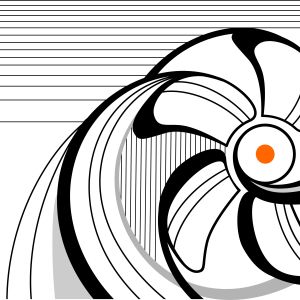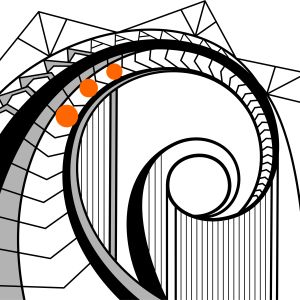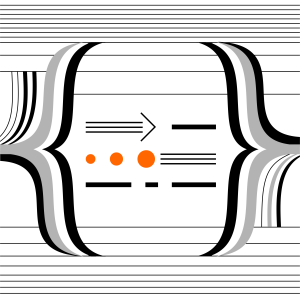The Unseen Architects of Power: A Deep Dive into Industrial and Marine Generators
We take electricity for granted. It’s just… there. Until it’s not. In that silent, dark moment, the modern world grinds to a halt. But for critical infrastructure—hospitals, data centers, factories, and every large ship on the ocean—that moment never comes. It’s held at bay by the humming, thundering work of industrial and marine generators. These aren't the little pull-start units for your camping trip; these are multi-ton behemoths that create power on demand, anywhere, anytime. This article is a deep dive into this crucial, yet overlooked, world. We'll explore the history of making your own power, meet the corporate titans like Caterpillar, Cummins, Wärtsilä, and MAN who dominate the market, break down their legendary models, and look at the technological arms race to create a cleaner, smarter, and more reliable watt of power for a world that can’t afford to stop.
Introduction: The Hum in the Background
Think about the last time the power went out. The first few seconds are weirdly peaceful, a sudden blanket of silence. Then, a mild panic sets in. The Wi-Fi is dead. The fridge has stopped humming. The entire 21st century, it seems, has been temporarily unplugged.
Now, imagine you’re in an operating theater. Or running a billion-dollar data center for a major bank. Or captaining a 400-meter container ship in the middle of a Pacific storm. For you, a power outage isn't an inconvenience; it's a catastrophe. And it's a catastrophe that almost never happens, thanks to the unsung hero of our industrial age: the generator set, or "genset."
These machines are the ultimate insurance policy, the quiet professionals humming in the background of civilization. They are the reason the lights stay on at the hospital, the servers stay cool at Google, and the refrigerated containers (reefers) full of Argentinian beef stay frozen on their way to Rotterdam. They are self-contained power stations, ready to roar to life in seconds.
But who builds these crucial machines? What differentiates the yellow one from the red one? And how did we get from a simple scientific curiosity to building diesel-powered beasts the size of a small bus that can power a town? This is the story of the architects of power, the companies locked in a global battle for reliability, efficiency, and the right to be the hum in the background you never have to think about.
Chapter 1: A Quick Spark (The Origin Story)
The whole thing is, at its core, a beautiful piece of 19th-century physics. In 1831, Michael Faraday, a man who started as a bookbinder's apprentice, discovered that moving a magnet inside a coil of copper wire created an electric current. This principle, electromagnetic induction, is the parent of basically every single thing that generates electricity. He didn't know what to do with it, but he knew it was a big deal. When asked about its practical value, he allegedly quipped, "Sir, one day you may tax it." He wasn't wrong.
For decades, this was a curiosity. But as the world industrialized, the need for localized, reliable power grew. The formula was simple, yet potent:
Prime Mover + Alternator = Power
-
The Prime Mover: This is the muscle. It’s an engine that creates rotational energy. It started with steam, but the invention of the internal combustion engine—especially Rudolf Diesel's efficient powerhouse—made the modern generator possible.
-
The Alternator (or Generator Head): This is the magic part. It’s Faraday's discovery on an industrial scale. The engine turns a shaft connected to a rotor (the magnet), which spins inside a stator (the coil of wire). The spinning magnetic field pushes electrons around in the wire, and voilà: you have alternating current (AC), ready to do work.
Put these two things in a steel frame, add a cooling system, a control panel, and a fuel tank, and you have a generator set. The concept is simple. The execution, and the scale, is anything but.
Chapter 2: The Power Brokers
The market for industrial and marine generators is a battlefield of giants. These are companies whose names are synonymous with heavy machinery. They compete on brutal metrics: fuel efficiency, load acceptance (how quickly they can handle a sudden power demand), service intervals, and above all, legendary reliability.
1. Caterpillar: The Unkillable Yellow Box
Let’s be clear: when the world ends, the cockroaches will be scurrying around powered by a yellow Caterpillar generator. For decades, Caterpillar Inc. has been the undisputed heavyweight champion of on-site power. Their brand is built on a simple promise: it will start, it will run, and it will survive conditions that would turn lesser machines into scrap metal.
Their generators are ubiquitous. You’ll find them powering remote mining operations in the Australian outback, providing backup for hospitals in New York City, and serving as the primary source of power on thousands of offshore oil rigs and vessels. Their global dealer network, a legendary logistical marvel, means you can get parts and service for a CAT genset pretty much anywhere humans are found.
Iconic Caterpillar Models:
-
The C-Series (e.g., C18, C32): This is the bread and butter of Caterpillar's generator lineup. The C18, a compact and powerful inline-six engine, and the C32, a brawny V12, are workhorses found in countless applications. They are valued for their power density and proven reliability. They are simple enough to be maintained in the field but advanced enough to meet modern emissions standards.
-
The 3500 Series (e.g., 3516): Just as it’s a legend in marine propulsion, the 3516 is a god-tier platform for power generation. A 3516 genset is the default choice for critical applications that cannot fail: large data centers, major hospitals, and industrial plants. They can run for thousands of hours between overhauls and are known for their ability to accept a massive electrical load instantly without flinching—a critical trait for backup applications.
-
The G3500 Series (e.g., G3520): Recognizing the shift towards cleaner fuels, CAT developed gas-powered versions of their legendary platforms. The G3500 series runs on natural gas and is a popular choice for continuous power (prime power) applications where there's a steady supply of gas, such as cogeneration plants (producing both heat and power).
2. Cummins: The Red Giant of Reliability
If Caterpillar is the unkillable monster truck, Cummins is the hyper-reliable semi-truck that always runs on schedule. Founded in Columbus, Indiana, in 1919, Cummins Inc. built its empire on the back of the diesel engine. Their reputation is forged in the grueling world of long-haul trucking, but their power generation division is a global force.
Cummins is known for engineering excellence. They design and build the entire integrated system: the engine, the alternator (under their Stamford/AVK brands), the control systems, and the filtration. This "Power of One" philosophy means every component is designed to work together perfectly, which customers love. They are a massive player in data centers, commercial buildings, and the marine auxiliary market.
Iconic Cummins Models:
-
The QSK Series (e.g., QSK60, QSK95): This is Cummins' high-horsepower heavyweight division. The QSK60, a 60-liter V16, is a direct competitor to CAT's 3516 and is revered for its fuel efficiency and long service life. The QSK95 is an even bigger monster, a 95-liter V16 that Cummins dubbed the "Hedgehog." It’s one of the most powerful high-speed diesel generators available, capable of producing over 3.5 megawatts of power from a single unit.
-
The Centum Series: This is the newest generation, launched to meet the next wave of emissions standards and customer demands. The Centum series is designed to be "fuel agnostic," meaning the base engine can be configured to run on diesel, natural gas, and, in the future, hydrogen. It’s Cummins’ bet on a flexible, low-carbon future.
-
Onan Marine Generators (e.g., Onan MDKDK): For decades, the name Onan (owned by Cummins) has been synonymous with marine generators, especially in the recreational and yachting world. These "gensets in a box" are known for being exceptionally quiet and reliable, a must-have for any large boat that wants to run air conditioning and appliances away from the dock.
3. Wärtsilä: The Efficiency Mavericks
Moving back to the world of big ships and power plants, we find Wärtsilä. While they are a titan of main propulsion engines, they are also a dominant force in the auxiliary marine generator market and land-based power plants.
Wärtsilä’s game isn’t about being the toughest or the most common; it’s about being the smartest and most efficient. Their gensets are often based on their medium-speed four-stroke engine platforms, which are designed for incredible fuel economy and the ability to run on a wide variety of fuels, from high-quality marine gas oil to cheap, sludgy heavy fuel oil (HFO), and increasingly, LNG.
Iconic Wärtsilä Models:
-
The Wärtsilä 20: This is a compact and robust four-stroke engine that serves as a workhorse auxiliary generator on thousands of ships. It’s designed for simplicity and reliability, providing the essential power for a vessel's daily operations.
-
The Wärtsilä 31DF: The record-holder for efficiency as a propulsion engine is also a superstar in power generation. In its dual-fuel (DF) configuration, the Wärtsilä 31DF genset can run on natural gas as its primary fuel, with diesel as a backup pilot fuel. This makes it a popular choice for cruise ships and other vessels operating in strict emission control areas, as well as for land-based power plants that need both efficiency and fuel flexibility.
-
Modular Power Plants: Wärtsilä has pioneered the concept of modular, engine-based power plants. Instead of building one giant, slow-to-react turbine plant, they sell solutions based on multiple, medium-sized engine gensets. This provides incredible flexibility—you can turn engines on and off to match demand perfectly, and they can ramp up to full power in minutes, not hours. This is crucial for balancing modern grids that rely on intermittent renewables like wind and solar.
4. MAN Energy Solutions: The German Engineering Overlords
Like their rival Wärtsilä, MAN’s generator business is an extension of their massive engine portfolio. They leverage their deep expertise in two-stroke and four-stroke engine technology to provide power solutions for both ships and shore.
MAN gensets are found on the world’s largest container ships, providing the electricity needed for the crew, navigation, and, crucially, the thousands of refrigerated containers. On land, their large-bore gas and diesel engines form the backbone of power stations across the globe. Their hallmark is heavy-duty, industrial-grade engineering designed for continuous, demanding operation.
Iconic MAN Models:
-
The MAN L28/32H & L32/44CR: These are highly popular medium-speed four-stroke engines used for marine auxiliary power. They are known for their robust construction and low operating costs. The "CR" denotes a Common Rail fuel system, giving them the same kind of electronic efficiency as modern propulsion engines.
-
The MAN 51/60DF: This is a large, powerful dual-fuel engine used for major power plant installations. It can switch seamlessly between gas and liquid fuels, providing both low emissions and operational security. A power plant built with these engines can provide stable, baseload power for a small city.
-
Holeby-branded Gensets: For many years, MAN's generator sets were produced under the "Holeby" brand, named after their factory in Denmark. While they are now fully branded as MAN, seasoned marine engineers still refer to these reliable auxiliary units as Holeby gensets.
Chapter 3: The Flavor of Power
Not all generators are created equal. Their design and fuel depend entirely on their job.
-
Application: The most basic divide is Standby vs. Prime vs. Continuous.
-
Standby: This is your hospital backup generator. It sits silently for 99.9% of its life, waiting for the grid to fail. It must start reliably and accept 100% load almost instantly.
-
Prime: This is for a remote construction site or mine with no grid access. The generator is the main source of power, but it gets turned off at night. It's built for durability over thousands of operating hours.
-
Continuous: This is a power plant. The generator runs 24/7, 365 days a year, only stopping for planned maintenance. Everything is over-engineered for maximum lifespan.
-
-
Fuel Type: The fuel choice is a balancing act of cost, availability, and regulation.
-
Diesel: The default choice. The fuel is energy-dense, stable, and available everywhere. Diesel engines are reliable and great at handling variable loads.
-
Natural Gas: Cleaner and often cheaper than diesel, but requires a constant pipeline supply. Excellent for continuous prime power but less common for standby (where fuel storage is an issue).
-
Heavy Fuel Oil (HFO): The cheap, residual dregs of the oil refining process. It’s thick like molasses and must be heated to be used. It's dirty but incredibly cheap, making it the fuel of choice for large marine engines and power plants in parts of the world with lax environmental laws.
-
Dual-Fuel: The modern solution. Engines that run primarily on clean natural gas but can switch to diesel if the gas supply is interrupted or as a pilot ignition source.
-
-
Marine Specifics: Diesel-Electric Propulsion A fascinating evolution on large ships (especially cruise ships, LNG carriers, and offshore vessels) is diesel-electric propulsion. Instead of having one giant engine turning the propeller, the ship has a central power station with multiple generator sets (e.g., four or five Wärtsilä or MAN gensets). These produce electricity that feeds a high-voltage grid onboard. This electricity then powers everything: the hotel load (lights, kitchens, AC) and large electric motors connected to the propellers. This is incredibly efficient and flexible, allowing the ship to run only the number of generators needed for the current power demand.
Chapter 4: The Next Watt
The world of power generation is on the brink of a massive transformation, driven by the twin pressures of decarbonization and digitalization.
-
The Fuel Revolution: The race is on to adapt engines for zero-carbon fuels.
-
Hydrogen (H2): All the major players, especially Cummins, are heavily investing in hydrogen internal combustion engines (HICE). The challenge is onboard storage (hydrogen is not dense) and producing "green" hydrogen without using fossil fuels.
-
Ammonia (NH3) & Methanol: These are seen as promising hydrogen carriers for marine applications, as they are much easier to store as a liquid. Wärtsilä and MAN are already testing engines designed to run on them.
-
HVO/Biofuels: Hydrotreated Vegetable Oil (HVO) is a "drop-in" replacement for diesel that can significantly cut carbon emissions. Modern gensets from CAT and Cummins are already approved to run on it.
-
-
Hybridization and Batteries: Just like in cars, hybridization is coming to industrial power. Generator sets are being paired with large battery storage systems. The generator runs efficiently to charge the batteries, and the batteries handle the fluctuating power demands. This saves fuel, cuts emissions, and reduces engine wear and tear.
-
The Smart Generator: The modern genset is a data-producing machine. It’s covered in sensors monitoring temperature, pressure, and vibrations. Through IoT (Internet of Things) connectivity, companies can now offer predictive maintenance. Instead of changing the oil every 500 hours, algorithms analyze the data and tell you that this specific engine needs service in 42 hours, preventing a catastrophic failure before it happens.
Conclusion: The Constant, Quiet Hum
The generator is the ultimate symbol of our modern paradox: we demand constant, uninterrupted connectivity and power, but we want the infrastructure providing it to be invisible and silent.
The work of Caterpillar, Cummins, Wärtsilä, and MAN allows this paradox to exist. Their machines are the result of a century of brutal competition and relentless engineering, a quiet war fought in fractions of a gram of fuel per kilowatt-hour. They are evolving from dumb, mechanical beasts into smart, fuel-agnostic power sources.
So the next time you're in a hospital, or on a cruise ship, or even just when your lights flicker and then immediately come back on, take a second to listen. You might just hear it: the deep, reassuring hum in the background. The sound of a Power Broker doing its job, keeping the modern world plugged in.





